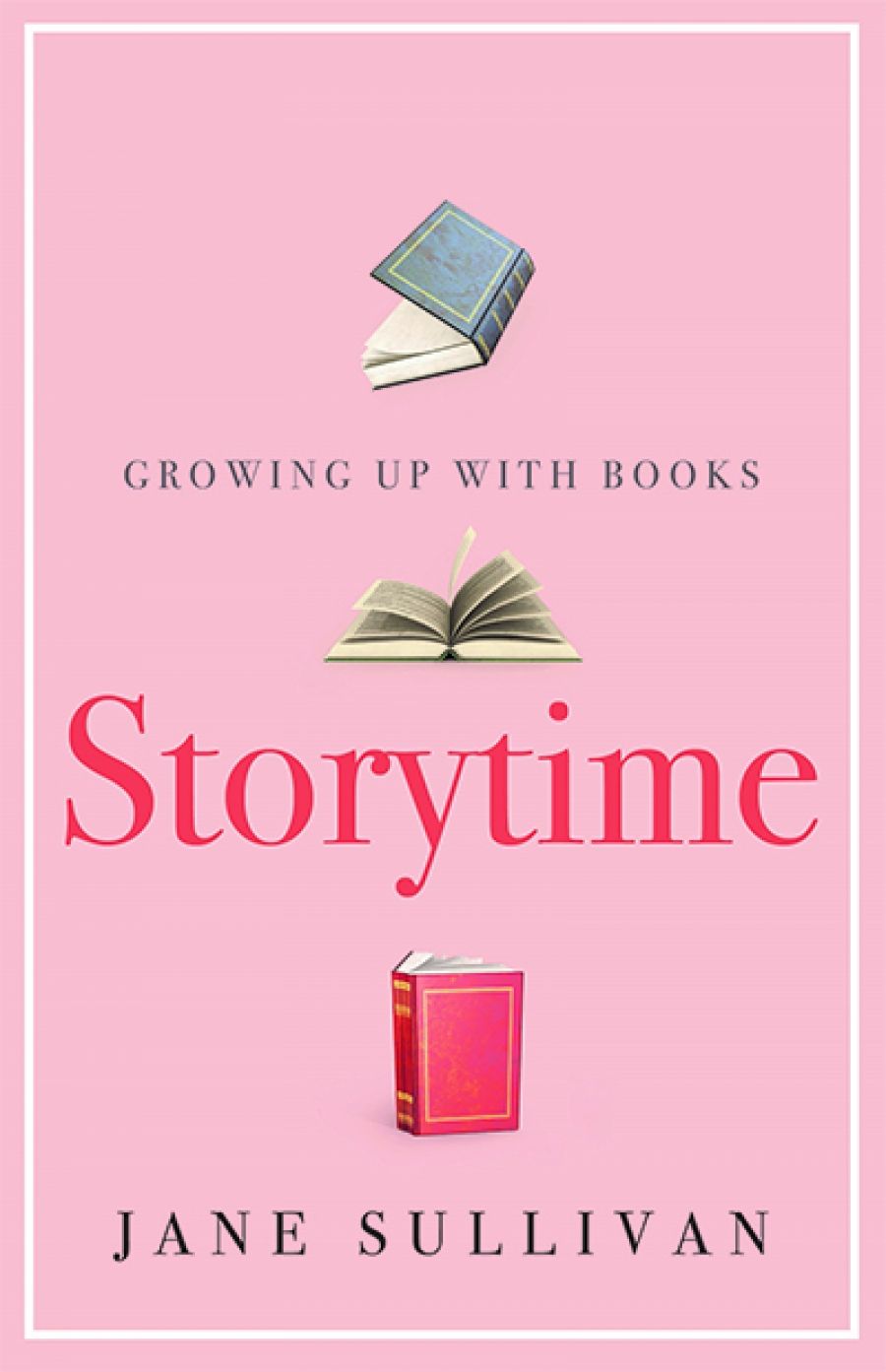
- Free Article: No
- Contents Category: Essay Collection
- Custom Article Title: Margaret Robson Kett reviews 'Storytime: Growing up with books' by Jane Sullivan
- Review Article: Yes
- Online Only: No
- Custom Highlight Text:
Maryanne Wolf’s excellent book about the reading brain, Proust and the Squid: The story and the science of the reading brain (2007), quotes Marcel himself ...
- Grid Image (300px * 250px):

- Book 1 Title: Storytime
- Book 1 Subtitle: Growing up with books
- Book 1 Biblio: Ventura Press, $29.99 pb 346 pp, 9781925384673
As someone who has never left the world of children’s books behind, I have regarded other such essays by adult writers with suspicion bordering on scorn. They haven’t put in the hard yards! Is it because children’s books are one of the few markets experiencing sales growth that people are turning their attention to them? I am usually won over by the possibility of gaining a new perspective on the familiar, and meeting new books, as I did here.
Sullivan beautifully sketches how imperfect memory leads to conflation of narratives. Her summary castigation of her younger self at getting one or two things wrong is matched with pleased amazement when she finds that she has remembered accurately. We meet the young Jane reading a book in bed, by fading daylight, in St John’s Wood: H.A. Guerber’s The Myths of Greece and Rome (1908). She’s taken it from her parents’ bookshelf and is enjoying the tale of Cupid and Psyche, whom she calls Pisk. It’s details like this – a child’s pronunciation of an unknown name – that bring this book to life.
Sullivan is upfront that her list of chosen books is not a catalogue of classics. Alice’s Adventures in Wonderland (1865), The Wind in the Willows (1908), and Winnie-the-Pooh (1926) are included, but so are contemporary works like Tove Jansson’s Finn Family Moomintroll (1948), Gillian Avery’s The Warden’s Niece (1957), and Alan Garner’s The Weirdstone of Brisingamen (1960). Enid Blyton, of course. She includes the ephemeral precursor to the graphic novel, the girls’ school story in comic-strip digest form, as well as essential expat reading: The Magic Pudding (1918). Exploring the links between these books and her home and school life makes for compelling and affecting stories of their own. Sullivan throws in hypotheses about exactly what she was looking for, in terms of characterisation, plot, and design elements.
Do we expect the books we read when young (Proust’s calendars) to go on delighting, surprising, and frightening us as they once did? Louisa May Alcott’s Little Women (1868) is the revisiting that intimidates Sullivan most: ‘Can I be right or wrong about a book?’ The inclusion of this title epitomises the ‘classic’ conundrum – why did everyone else seem to love it so much, when young Jane disliked it intensely? Sullivan’s exploration of the ‘right or wrong’, including the niggling thought that the book’s heroine Jo influenced her own career choice, makes this chapter particularly entertaining.
The book design invites the reader to engage with the collected short reminiscences of childhood reading by other famous writers and readers sprinkled throughout. This will be a kind of fallback for readers disappointed not to find their own favourites on Sullivan’s list. It’s harder to see why the publisher has chosen to use breakout boxes with sentences from the text. I found this journalistic device distracting and irritating. On page 194, the opening sentence of a paragraph is set in this way, right beside the same text.
Sullivan, with a journalist’s acumen for the contextual backstory, sticks to her stated intention of examining the personal. (She doesn’t make any broad-brush generalisations about children’s reading today.) Sharing the books that contributed to making her who she is, Sullivan invites all readers to reflect on remembrances of books past.


Comments powered by CComment